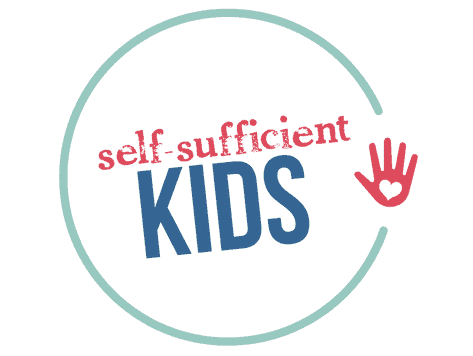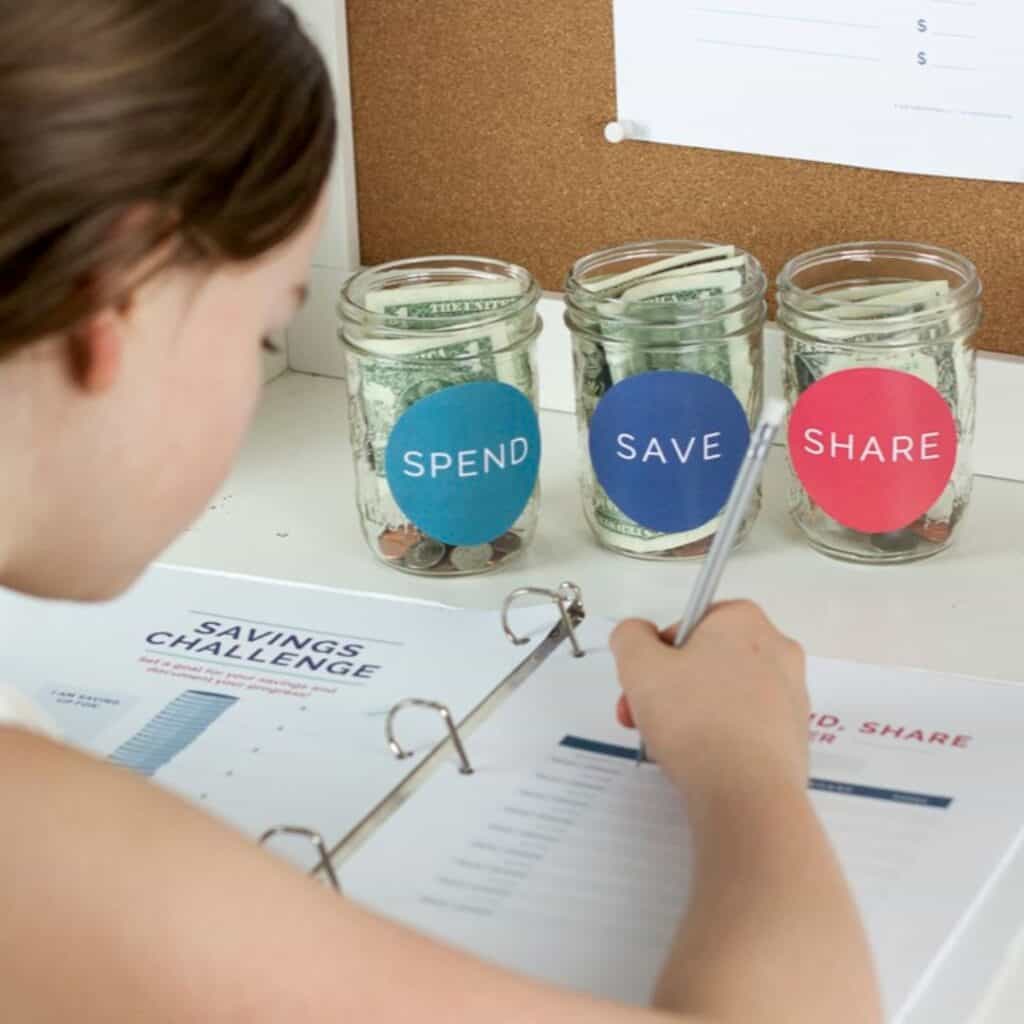9 Mistakes to Avoid When Giving Kids an Allowance
Research shows that giving kids an allowance is beneficial, but setting it up correctly is important. Here are 9 mistakes to avoid when giving kids an allowance.

(This post contains affiliate links. If you click on a link and make a purchase, I’ll receive a commission at no extra cost to you.)
A recent survey found that 70% of American adults couldn’t answer basic financial questions correctly.
These questions included how interest on a savings account is calculated and if it is more or less risky to purchase a single company stock than a mutual fund.
And Americans aren’t alone – in the top-scoring countries, Germany and Switzerland, only half of the respondents got all three survey questions right.
And yet we live in a world where the need to understand basic finance is greater than ever. As the Atlantic put it: “A fast-changing world economy makes financial ignorance more dangerous than ever before.”
Helping our kids avoid that financial ignorance can begin by giving kids an allowance. Two studies from T. Rowe Price and The Journal of Economic Psychology show that kids who receive an allowance tend to be more financially savvy than kids who don’t.
Allowance can also:
- Show kids how money transactions work
- Let kids feel competent about handling money
- Teach kids what it takes to save and budget money
- Give kids a sense of responsibility and independence
- Let kids experience buyer’s remorse
Of course, all of these educational outcomes can only occur if an allowance is set up correctly. Here’s a list of things to avoid when giving kids an allowance.
These Are the Mistakes You Want to Avoid When Giving Kids an Allowance:
1. Not talking to your kids about money: An allowance alone won’t teach your kids everything there is to know about money. Research shows that kids whose parents frequently talk to them about money, compared with those who do not frequently discuss money, are more likely to feel knowledgeable about personal finance and investing. Talking to your kids about money can be as simple as comparing prices in the grocery store, discussing how ATMs, credit cards, checks, and stocks work or even letting your kids get involved in the thought process behind big purchases such as buying a new house.
2. Giving kids too much money: The amount of allowance you give your kids can make the difference between raising kids who feel entitled and kids who understand what it takes to budget and save money. If kids get so much money each week that their savings goals are accomplished in a short amount of time, they won’t grasp the concept of having to make difficult decisions to achieve a savings goal. They also won’t be incentivized to work for more money (see #9).
3. Not making kids responsible for certain purchases: Once your kids receive an allowance, make it more than “fun money”. Let your child know they are now responsible for purchasing things that mom and dad once paid for. For young kids, these expenses could be buying art supplies, Legos, or the cost of other entertainment or amusements. As kids get older and into the teen years, you can add expenses such as paying for cell phone service, gasoline or car maintenance. For a full list of what you can stop paying for once you give your kids an allowance click here.
4. Not letting kids take ownership of their money and make mistakes: Everyone makes mistakes with money – sometimes big ones that we learn from and will never repeat again. The stakes are low for kids – deciding to buy expensive designer jeans only to realize there isn’t enough for other essential clothes is practically harmless compared to an adult going on a shopping spree and then realizing there isn’t enough rent money. If you see your child about to make a potentially unwise purchase, let it happen. They’re bound to learn a lot from it.
5. Not being consistent: If you’re going to set up an allowance and agree to pay your kids on a regular basis (be it weekly or monthly) then do it. Going back and forth between having your child pay for certain items and you (because you forgot to give your kids allowance) defeats the learning goals that allowance is intended for. The easiest way to remind yourself it’s allowance day is to set an alarm on your phone. As kids get older, and grasp the concept of physical money, you can use an app like Greenlight that automatically deposits a set allowance into kids’ accounts each week.
6. Not teaching kids to save their money: The idea of an allowance isn’t just to have fun with money, but also to learn how to save it. When kids are young, you can instill this lesson of saving money by dividing allowance between spend and save jars (and possibly a jar for donations too). Getting kids to understand the value of saving money can be tricky when they’re young – for tips on how I teach my kids to save their money click here.
7. Being a bad example: The undeniable truth is that our kids learn more from what we do than what we say. If you aren’t sticking to a budget, are spend beyond your means, or have incurred credit card debt your kids will follow your lead. But if you do find yourself in any of these situations – you can use it as an excellent learning tool with your kids. Explain to older kids, in a way that won’t make them fearful of the family’s financial state, that you wish you had done things differently.
8. Making allowance contingent on completing chores: The purpose of an allowance is to teach kids how to manage money. But if allowance is connected to completing chores, at some point a child could decide doing chores isn’t worth the money anymore. In this case, two lessons are lost – learning responsibility through doing chores and learning how to manage money. Also, note that research shows that kids who don’t get paid for chores feel a greater sense of self-worth and happiness. Paying kids for daily chores sends the message that they aren’t equal participants in the family and can actually demotivate kids. Related: How to Motivate Kids to do Chores (Without Paying Them!).
9. Not encouraging kids to work for more money: While you may not be paying your kids for chores, by all means, encourage them to work for extra money. Better yet, have your kids think of ways they could take on extra work around the house and then negotiate how much they should get paid. This is a great way to help them begin to think like entrepreneurs – a trait that is essential in our ever-changing economy.
The Kids Money Management Toolkit has everything you need (except money!) to begin giving your kids an allowance. In addition to guidance and advice, you’ll also receive Save, Spend, and Share jar labels, a Kids Money Ledger, a Savings Challenge Sheet, a Jobs-for-Hire Sheet, and a Kids Allowance Contract. Click here to learn more.
See related:
How to Teach Kids to Save Their Money
How to Teach Kids to Budget Their Money
7 Things You Should Stop Paying for Once Your Kids Have an Allowance
What to do next…
1. Subscribe to Self-Sufficient Kids’ email list.
Like what you read here and want to learn more? Every Thursday I’ll send you one parenting tip about raising self-sufficient kids and creating the peaceful relationship you yearn to have with your child. Click here to sign up.
2. Take one of my quizzes!
Find out if you’re raising a self-sufficient kid (click here) or if you’re doing too much for your kids (click here). At the end of each quiz, you’ll be asked to provide your email address to see the results.
3. Get your kids started on chores.
Learn how to get your child started on chores (& keep them motivated + avoid power struggles) by enrolling in my Get Your Kids Successfully Started on Chores course. Click here to learn more and sign up.

Kerry Flatley is the owner and author of Self-Sufficient Kids. She has a BA in economics, an MBA, a certificate in financial planning, and has been investing ever since she landed her first job. Kerry also has two girls, ages 13 and 15, who have been receiving allowance – and learning money management – for the past seven years.

